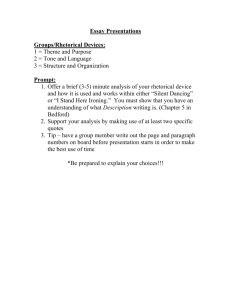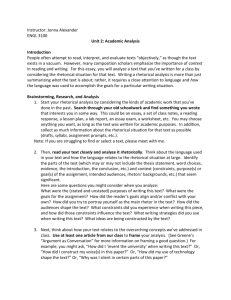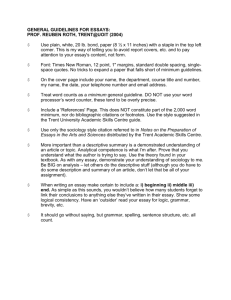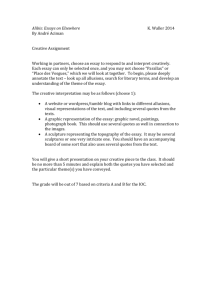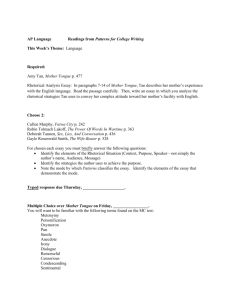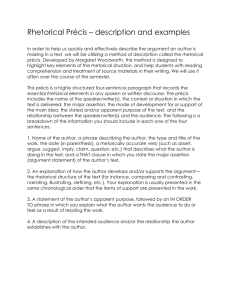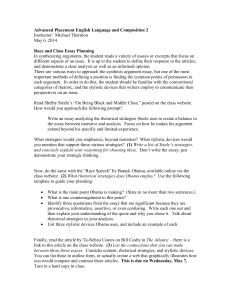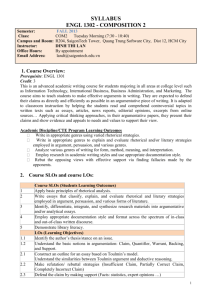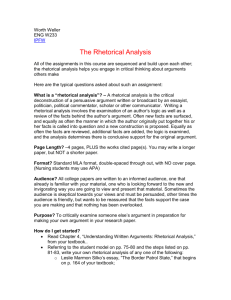Text Analysis Guidelines: Rhetoric & Composition
advertisement
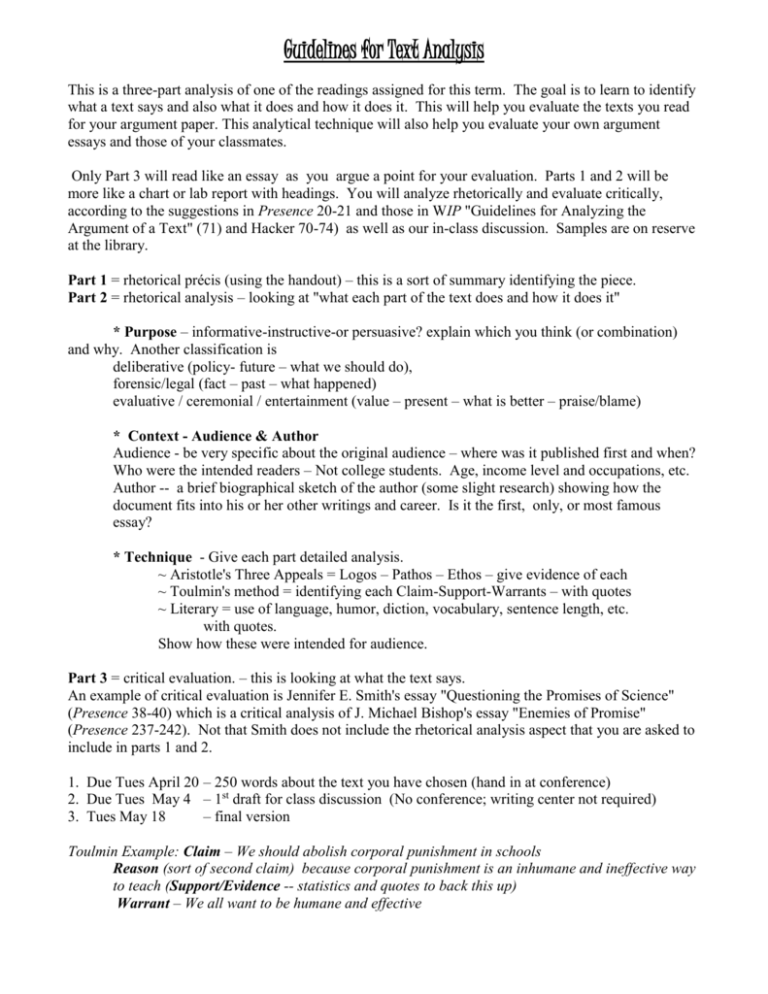
Guidelines for Text Analysis This is a three-part analysis of one of the readings assigned for this term. The goal is to learn to identify what a text says and also what it does and how it does it. This will help you evaluate the texts you read for your argument paper. This analytical technique will also help you evaluate your own argument essays and those of your classmates. Only Part 3 will read like an essay as you argue a point for your evaluation. Parts 1 and 2 will be more like a chart or lab report with headings. You will analyze rhetorically and evaluate critically, according to the suggestions in Presence 20-21 and those in WIP "Guidelines for Analyzing the Argument of a Text" (71) and Hacker 70-74) as well as our in-class discussion. Samples are on reserve at the library. Part 1 = rhetorical précis (using the handout) – this is a sort of summary identifying the piece. Part 2 = rhetorical analysis – looking at "what each part of the text does and how it does it" * Purpose – informative-instructive-or persuasive? explain which you think (or combination) and why. Another classification is deliberative (policy- future – what we should do), forensic/legal (fact – past – what happened) evaluative / ceremonial / entertainment (value – present – what is better – praise/blame) * Context - Audience & Author Audience - be very specific about the original audience – where was it published first and when? Who were the intended readers – Not college students. Age, income level and occupations, etc. Author -- a brief biographical sketch of the author (some slight research) showing how the document fits into his or her other writings and career. Is it the first, only, or most famous essay? * Technique - Give each part detailed analysis. ~ Aristotle's Three Appeals = Logos – Pathos – Ethos – give evidence of each ~ Toulmin's method = identifying each Claim-Support-Warrants – with quotes ~ Literary = use of language, humor, diction, vocabulary, sentence length, etc. with quotes. Show how these were intended for audience. Part 3 = critical evaluation. – this is looking at what the text says. An example of critical evaluation is Jennifer E. Smith's essay "Questioning the Promises of Science" (Presence 38-40) which is a critical analysis of J. Michael Bishop's essay "Enemies of Promise" (Presence 237-242). Not that Smith does not include the rhetorical analysis aspect that you are asked to include in parts 1 and 2. 1. Due Tues April 20 – 250 words about the text you have chosen (hand in at conference) 2. Due Tues May 4 – 1st draft for class discussion (No conference; writing center not required) 3. Tues May 18 – final version Toulmin Example: Claim – We should abolish corporal punishment in schools Reason (sort of second claim) because corporal punishment is an inhumane and ineffective way to teach (Support/Evidence -- statistics and quotes to back this up) Warrant – We all want to be humane and effective
